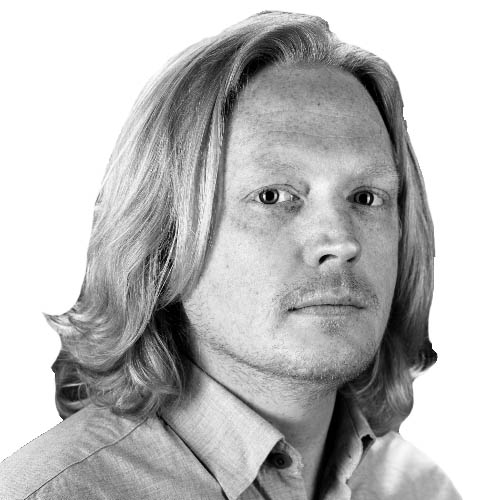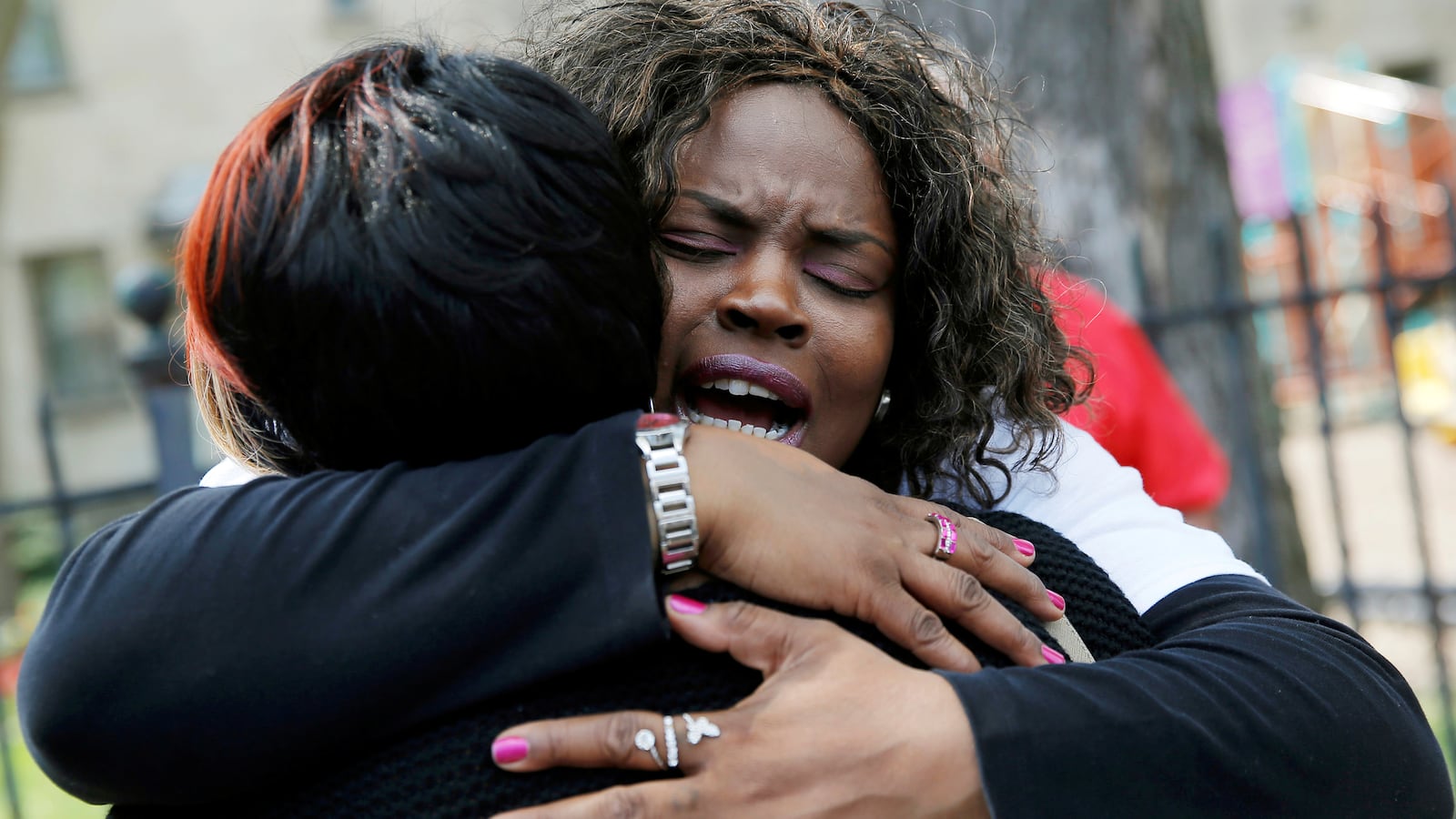CHICAGO — Abe Simmons sat down on a bus bench at the corner of Chicago and Leclaire late Saturday, watching as police worked one of dozens of shooting scenes that played out across the city over the holiday weekend.
Chicago’s ghost shooters—charged in only 26 percent of the city’s homicides last year—wreaked havoc on summer’s unofficial kickoff weekend, a three day period that saw at least 36 shot and four killed by Sunday morning, according to the Chicago Tribune. There have been more than 1,400 shootings and nearly 300 homicides in 2016 so far.
“I’m tired of this shit. I’m tired of this city, man,” Simmons, 36, said. “It’s fucked up, man.”
The country wants to know why. Media descends on holiday weekends to track the violence and attempt to put it in perspective. But for many in Chicago, the mayhem is simply a part of life.
“This is every day in Englewood,” said Terrell, who declined to give his last name, at the scene of a homicide on the city’s southwest side Friday night just down the street from his new home.
The father of two young girls came to West 75th place—a quiet block of stout brick bungalows in a neighborhood where many police officers live—from Englewood, one of the city’s most violent areas. He moved in Friday and was watching a body being pulled from a car Friday night.
“This makes me think twice,” he said.
Just on our side of the police tape, a young man is in handcuffs, being detained and questioned by the police. He’s eventually let go and tells Terrell “fuck the law” as he’s driven away.
“I used to say shit like that, too,” Terrell says. “But you get older and you learn.”
There are people like Terrell and Abe Simmons in every corner of the city, going about their lives just like anyone else. Perhaps descriptions of Chicago as a war zone are inappropriate considering these are neighborhoods where people live and work—and survive.
These are the people you run into at crime scenes. Never the shooters. They are rarely around and rarely caught.
Maybe in a high profile case like Tyshawn Lee, an 8-year-old murdered over a gang dispute last summer, the cops will nail the bastards. But what about the guy at Chicago and Leclaire? What are the odds that the pictures and videos taken by crime scene technicians will lead to an arrest? Because of the volume of shootings and chaos combined with a street code of silence, police seem to have an impossible task.
Chicago’s violent, invisible terrorists are destroying what would otherwise be a peaceful way of life for many in the city.
The causes are many and the answers are few. Older members of the black community—Steve and Gloria in Woodlawn, for instance—blame a lack of jobs and opportunity. They talk about a bygone era when there were steel mill jobs and black-owned stores, pride in the community made stronger by the burgeoning civil rights movement. Then King was killed and parts of Chicago burned. Then the jobs left and with them the promise of upward mobility. Now the neighborhood in which Steve and Gloria live, near a stretch of Cottage Grove that used to be home to black-owned tavern after black-owned tavern, is inundated with empty storefronts and empty homes.
While she insisted that violence in her neighborhood isn’t as bad as it may seem, Gloria knows how to stay out of trouble with Chicago’s shooters.
“The code here is don’t talk,” she said. “Not if you wanna live. Not if you wanna live peacefully.”
Steve and Terrell—21 years apart and on opposite ends of the city—agree that shooters and gangbangers are a generation lost. There just isn’t anything to do.
“So the kids get fucked up, get crazy, gangbang and shoot,” Terrell said at the 79th Place homicide on Friday night.
Some police officers who have spoken to The Daily Beast blame arduous paperwork required for street stops—Chicago’s version of stop and frisk—for this year’s uptick in gun violence. Fewer street stops mean fewer guns being taken off the street. One officer who spoke on the condition of anonymity blamed this system for the shooting spike, saying his fellow cops want nothing to do with the spider’s web of legalities involved every time they stop someone they think might be a shooter.
“People have no idea what needs to be done in this city to keep it safe,” the officer lamented. “Chicago is an ugly town filled with violent people who were being kept in check for the most part as best as possible.”
The officer relayed a comment made to his wife after shots were fired in their neighborhood.
“Laws don’t protect us; they protect criminals,” he told her that day. “That’s why CPD has always been so heavy-handed. Without their brute we are left defenseless.”
That’s not something that police-accountability activists want to hear, and it is the exact reason why the American Civil Liberties Union fought for the new paperwork required for the street stops that overwhelmingly affect people of color. But on Memorial Day weekend and throughout most of the summer, the city’s south and west sides are not the Chicago of the Laquan McDonald protests.
At least one peace march was held over the weekend, and communities throughout the city do their part—small and large—to prevent violence and soothe the grieving. But the mostly college-educated activists who took over downtown aren’t at crime scenes as paramedics try to save lives and police try to prevent shootings and men like Abe Simmons look on, thinking of a way out.
Each crime scene is different and each crime scene is the same. “Don’t walk past the tape!” officers say to pedestrians or rowdy teens who will then say “Fuck 12!” in reference to the cops. Blue lights flash in intermittent beeps across faces that are combinations of tired, concerned, or over it.
Older people are usually quiet; younger people are more boisterous. At a shooting in University Village on Friday night—close enough to the Loop to see the red, white, and blue lights atop the Willis Tower honoring those who died in defense of this country—a typical exchange played out.
“You see what happened?’ an officer asked a young woman.
“Nah, we didn’t see nothing,” she shot back with attitude.
“Why not? It’s your neighborhood,” the officer pleaded, knowing it was a futile effort.
On Saturday night as those ever-present blue lights flashed across Abe Simmons’s face, an ambulance passed, hitting its siren, probably on its way to another shooting.
“We’re there when you need us,” the red, cursive writing on the side of the hood read.
“Chicago is dead,” Simmons said staring blankly at the street, the lights, the cars, the scene. “I got a beautiful apartment down the street. I got a good job… I’m willing to let all this go. I want out of this city.”




